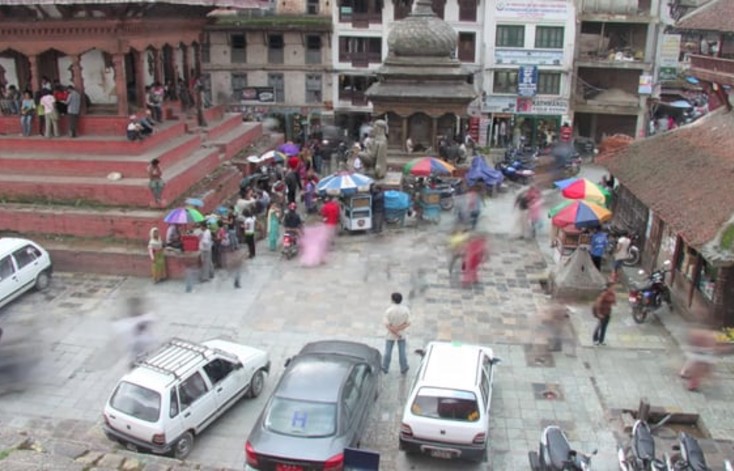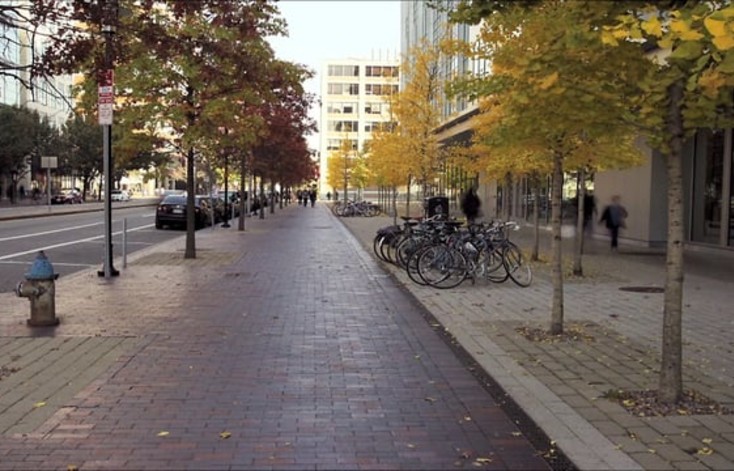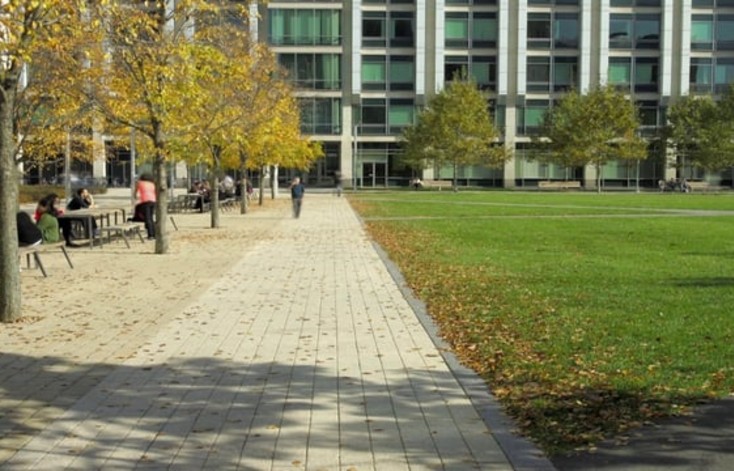Six Frames Per Second
With the rise of pro-sumer technologies and accessible editing software, Ryan Ives foresees new techniques for designers to explore the sites we work on and gauge the success of landscapes we’ve built through a critical metric — the patterns of daily life.
Landscapes move and people move through landscapes. This simple understanding is essential to the success of the spaces we create as landscape architects and is a focus of our attention throughout the design process. Yet we often choose still photography to represent our built work. Static photographs are a powerful, distilled representation, which can indicate movement, but typically suggest a constancy of space that does not exist.
The following video sequences investigate what is missing from the still photograph and consider how we can abstract and heighten movement to make a project’s design intent more legible.
Genesis
Still photography was my first passion and remains a favorite way of observing and exploring space. My practice in still photography formed my interest in and understanding of landscape and led me to study landscape architecture. I was initially taken aback when I encountered arguments around the limitations of using still photographs to represent spaces while studying at the University of Virginia.
These conversations are in many ways an outgrowth of a reengagement by practitioners with the embodied experience of moving through space and an attempt to counter the reductive qualities of still photographs. I began to investigate these issues in my studio work and eventually this research became a component of a 2010 trip to Nepal on a Howland Traveling Fellowship. I made the following short time-lapse video of Kathmandu’s Durbar Square showing the flows of traffic, people and commerce in this former royal compound turned public space. In contrast to many heritage sites, Durbar Square is intensely urban and lived-in. Sadly, many of the structures in the square were destroyed or damaged during the recent devastating earthquake of April 25, 2015.
The experience of moving through Durbar Square can feel chaotic to many western visitors, but even a few seconds of the animation show a spatial order and paths of movement. Flanking the primary flows of pedestrians and vehicles passing through the square are vegetable sellers and food carts, with people relaxing on the stepped levels of the temples watching the action. This first attempt at animating photographs revealed far more about Durbar Square than the still images I have made in this space.
Practice
A few years later, a conversation began at Reed Hilderbrand about the role video could play in our practice. My colleagues encouraged me to consider one of our nearby projects, MIT’s North Court and Main Street, as a test site for experimenting with representation techniques that could complement still photography and drawings. At North Court and Main Street, a new part of MIT’s campus connects and engages the campus core with the city street. Choreographing and animating movement between spaces was paramount in the design process.
The everyday act of people moving continually changes a space’s character and dimension. The design of a streetscape aims to be inclusive and the nuance of how individuals move through and react to the dimensions and layout of the streetscape can be both beautiful and evaluative. More traditional time-lapse techniques capture a longer timescale with wider intervals between images and can show where people stop in a site, but do not capture how individuals move through a site. In these experiments with a shorter image-capture interval, people in motion appear as a flow but remain legible as individuals. This reveals patterns while maintaining the particularities and nuances of each person’s walk. We can see the decisions people made when moving through space while understanding how the spatial character of the sidewalk is always in flux. This was achieved by capturing an image every three seconds and reducing the light reaching the sensor to allow for a 1/6th of a second exposure — long enough for a blurring effect on moving objects. The images were then animated and paired with sound recordings from the space. The sound is real-time, allowing for a multisensory experiential reading of the space at multiple time scales.
Site
Design affects how people move. We continually and unconsciously evaluate the relation of our bodies to our environment. Our movement changes accordingly. This sequence shows people moving along the primary “clear” sidewalk making slight adjustments for the bicycle parking, with a comfortable separation from traffic created by the regular rhythm of red oaks at the curb edge. The building and the ginkgos define a secondary corridor with a lighter flow that is more associated with the campus, but still part of the public way. By staggering the ginkgos at MIT in lines, a multitude of desire lines are available and a third more meandering corridor is created for people who are not as focused on their destination.
How we walk down a sidewalk is different from how we walk down a promenade or across a lawn. The promenade is a simple paved plane, more singular and open than Main Street. The dimensions and coursing of paving, the layout of benches and the rhythm of trees engenders a more social walking experience with many people walking in conversation and with seating at the edges for people watching. With a more privileged overhead view like the sequence below, we can see large patterns of movement and sitting, the fluctuations in volume of people and the success of the asphalt paths at capturing desire lines.
Analysis
Video, like still photographs, is a convention that we easily understand and consume on a daily basis, often uncritically. The above sequences each condense about ten minutes of time into a thirty-second sequence. When a series of still images is shown in quick succession, as they are here, the viewer’s brain fills in the gaps in information and we view the video as a continuum. These still frames were animated at six still frames per second, far fewer than the standard 28 frames per second used for television. The sequences have less photographic information and less perceived continuity than a traditional video, placing them in between a still photograph and a video.
Films created in this middle ground, between conventions, become diagrammatic; they demand a more active and critical viewing. Changing the way we view the mundane act of people moving through a space can reveal patterns of movement and the constantly changing character of the space, patterns we would not see in standard video or photography. By revealing and testing our design intent these sequences can influence how we make design decisions and ultimately the shape of the spaces we create.
All footage courtesy of Ryan Ives.
Published
July 2015


